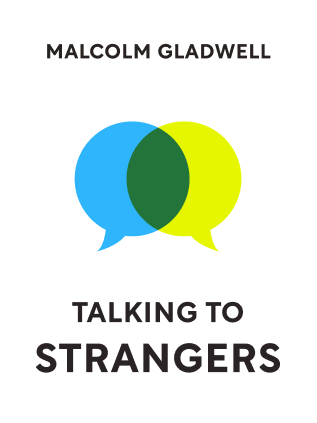

This article is an excerpt from the Shortform book guide to "Talking to Strangers" by Malcolm Gladwell. Shortform has the world's best summaries and analyses of books you should be reading.
Like this article? Sign up for a free trial here .
The primary reason that most people cannot immediately identify when a stranger is lying is that human beings default to assuming truth in others. This is called the Truth-Default Theory. Is it possible to learn how to spot a liar?
We’ll cover why it’s so hard to know how to spot a liar and discuss some biases to look out for.
The Problem with Knowing How to Spot a Liar
In an effort to understand how to spot a liar and analyze the Truth-Default Theory, psychologist Tim Levine used hundreds of versions of the same basic experiment (referred to here as the Trivia Experiment). Here is how the Trivia Experiment works:
- Levine invites participants to a laboratory. They are told that if they can answer a trivia test correctly, they will win a cash prize.
- Each participant is given a partner. The participants don’t know that the partner works for Levine.
- The test is administered by an instructor named Rachel. The participants don’t know that Rachel also works for Levine.
- Halfway through the test, Rachel leaves the room. The partner points to an envelope lying on the table and asks the participant if they should cheat on the test. The participant is given the opportunity to choose whether or not to cheat.
- After the trivia test is over, Levine interviews the participant. He asks the participant if they cheated during the test.
- After the completion of the interviews, Levine goes back to watch the tapes and categorizes them into two categories: Liars and truth-tellers.
- Other people then watch the interview tapes and try to decipher which participants are lying about cheating and which participants are telling the truth. Do they know how to spot a liar?
Levine’s Conclusion:
Do viewers know how to identify a liar? When watching the tapes, most people will guess that each person interviewed is telling the truth, unless they see a behavior that distinctly makes them think the person is lying. In other words, the viewers default to assuming truth—they naturally operate under the assumption that the majority of participants are honest. This is the Truth-Default Theory (TDT). Because of this default, viewers are more accurate at identifying truth-tellers than liars. It’s harder for them to know how to spot a liar.
Truth-Default Triggers
The Trivia Experiment itself is an example of how TDT plays a role in human behavior. Each participant that goes through the trivia test knows she is part of an experiment. Suddenly Rachel leaves the room and just so happens to leave the answers on the desk. The participant’s partner, who she’s never met before, suggests cheating. Wouldn’t you expect at least some of these college-educated participants to be suspicious at that point?
Every once in a while, a participant might catch on that one or more aspects of the trivia test is a setup, part of the experiment. However, they almost never assume that their partner is involved. Why not?
Levine concluded that a participant can have a suspicion, or even a series of doubts, but they will continue to believe the truth of the situation. The only way a person will snap out of the truth-default is if they gather enough doubts—if their suspicions rise to a level that they cannot explain away or rationalize. He called this a “trigger.” Having a low trigger point is the key to how to spot a liar.
So when a person (let’s call him Fred) comes across a stranger, Fred will generally believe what the stranger says. Even if he doubts the stranger several times, Fred will continue to default to the assumption that the stranger is telling the truth. That truth-default will hold until Fred gathers enough doubts to push him past the trigger point. If there are not enough red flags to trigger Fred to notice a stranger’s lie, it is only human that he would fail to identify the stranger’s deception. It’s hard to learn how to spot a liar.
Do you know how to identify a liar? The human instinct to default to truth is like playing the odds of a situation. History and statistics say that liars and con men are rare, so our natural default is to trust the strangers around us. Unfortunately, that sometimes means that liars and criminals like Ana Montes go years before triggering the doubt necessary to be caught.

———End of Preview———
Like what you just read? Read the rest of the world's best book summary and analysis of Malcolm Gladwell's "Talking to Strangers" at Shortform .
Here's what you'll find in our full Talking to Strangers summary :
- Why we don't understand strangers
- How to talk to strangers in a cautious way so you don't get fooled
- How Hitler deceived so many world leaders






